Shukto, a renowned Bengali dish, is a delectable curry crafted from an assortment of vegetables. It is customary to commence a traditional Bengali feast with a serving of rice accompanied by the flavorsome shukto aka shuktoni.
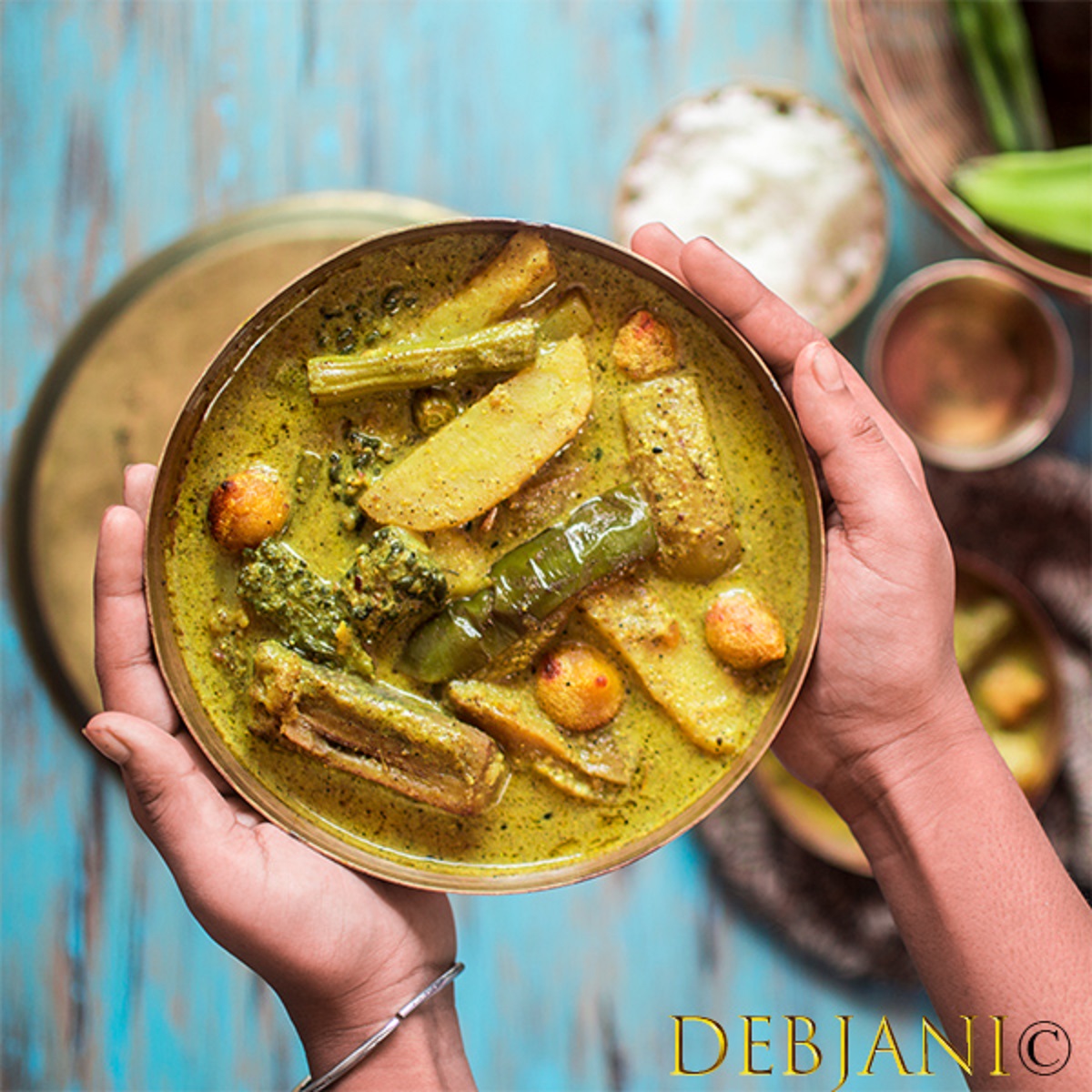
"ছি ছি ছি রানী রাঁধতে শেখেনি... শুক্তনিতে ঝাল দিয়েছে অম্বলেতে ঘি!"
This renowned Bengali melody illustrates the art of preparing Shukto flawlessly! What other introduction could I have chosen for this post? When translated, the song goes as follows: Rani lacks culinary expertise; she mistakenly adds chili to Shuktoni/Shukto and ghee to Ambal/Chutney! It is evident from the song that chili is strictly forbidden in Shukto. Is it so? Read ahead and find!
Jump to:
- Some tricks for cooking perfect shukto- Ingredients you shouldn't miss
- Why Shuktoni? Variations of Shukto
- Tips
- Bengali Shukto - Ingredients
- Here's how I cook Bengali Shukto aka Shuktoni at Debjanir Rannaghar!
- Recipe Card
- Shukto Video Recipe
- Other Bengali No Onion No garlic Preparations apart from Shukto from Debjanir Rannaghar
- More Bengali Veg Recipes
- Have you tried the Shukto Recipe from Debjanir Rannaghar!
- Shukto Recipe Pins for you
Some tricks for cooking perfect shukto- Ingredients you shouldn't miss
Oh, and let me tell you, I always like to add a touch of dried Red Chili to my Shukto. It's become a bit of a tradition for me whenever I make Shukto or Shuktoni. It's funny, because I can't really cook anything else besides Shukto! My father has this belief that a Bengali chef's skill is measured by their ability to prepare Shukto. It may sound silly, but sometimes we just have to go along with our parents, don't we?
Why Shuktoni? Variations of Shukto
Believe it or not, my parents judge one's cooking prowess based on their ability to masterfully prepare Shukto. This fact always leaves me feeling anxious whenever I attempt to cook it in my own kitchen. Growing up, I would watch my mother and aunts effortlessly slice and dice vegetables before cooking up a generous portion of Shukto. However, for me, the process of making Shukto is nothing short of laborious. Almost every time I decide to make it for lunch, it becomes the sole dish of the day, with dinner being outsourced from elsewhere. I can't comprehend how my mother manages to prepare it so flawlessly and without creating any chaos in the kitchen! As a precaution, I always make a surplus of Shukto so that my husband can enjoy it for the next couple of days.
Tips
The husband absolutely adores this dish and devours a whole plate of rice with it. Naturally, whenever I make Shukto, I make a large batch. I like to stick to the recipe passed down by the head of my family. The method includes the use of Randhuni, a particular spice, which I faithfully follow. In this article, I have attempted to outline the traditional steps for preparing Shukto. Although I didn't explicitly mention Dried Red Chili in the recipe, it is clearly visible in every picture. The decision to include it or not is up to you!
Shukto doesn't seem to be a hit at Mehebub's parents' place. The Shukto I tasted there lacked some flavor. Nevertheless, my Mother-in-law excels in preparing other delectable dishes such as Aande ka Halwa or Masoor Dal with Malabar Spinach, among others.
Bengali Shukto - Ingredients
In our Bengali culture, we hold Shukto in high regard, reserving it for special occasions such as weddings and birthdays. However, it is strictly a lunchtime delicacy. This unique vegetarian dish combines a medley of vegetables, including Bitter Guard, Eggplant, Green Banana, Potato, Sweet potato, Drumsticks, White radish, and Hyacinth Beans. To add an extra touch of flavor, many Bengalis, myself included, opt for the exclusive spice known as "Randhuni" when preparing Shukto. Personally, I make sure to stock up on Randhuni during my visits to Kolkata, ensuring I always have it on hand for future cooking endeavors.
Here's how I cook Bengali Shukto aka Shuktoni at Debjanir Rannaghar!
PrintRecipe Card
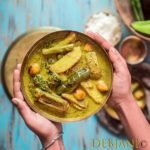
Shukto a Bengali delicacy
- Total Time: 40 mins
- Yield: 6 Portions 1x
- Diet: Vegetarian
Description
Shukto, a renowned Bengali dish, is prepared by combining a medley of vegetables. Typically, in a customary Bengali feast, our culinary journey commences with a serving of rice accompanied by shukto aka shuktoni.
Ingredients
- 4 Uchche/ Bitter Gourd
- 1 Begun / Eggplants
- 1 Kanchkola/ Plaintain/ Raw Cooking Banana (Small)
- 2 Potato/ Aloo (Medium)
- 2 Sweet Potato/ Ranga Aloo/ Sakkar Kandi (Small)
- 2 Drumsticks/ Danta/ Danthal
- 1 White radish/ Mulo/ Mooli
- 5 Sheem/ Hyacinth Beans
- 10-15 Bori/ Sun-dried lentil Dumplings
- 2 Tbsp. Poppy seeds/ Khuskhus/Posto
- 1 Tbsp. Mustard Seed
- 1 Tbsp. Ginger paste
- 1 Tsp. Panchphoran/ Bengali Five Spices
- 2 Tsp. Randhuni (optional)
- 1 Tsp. Turmeric Powder (optional)
- 1 Tbsp. Sugar
- 1 Tsp. Salt
- 4 Tbsp. Mustard Oil for Frying and Tempering
- 1 Tbsp. Ghee/clarified butter
- 1 cup Milk
- 4 cup Water
Instructions
- Soak both Mustard Seed and Poppy seed in water for 10 minutes.
- Make a smooth paste of Poppyseed and Mustard Seed separately using a food processor or Shil Nora (Shil Batta).
- Strain the mixture to remove the husk.
- Crush 1Tsp. Randhuni. Use 1 Tsp. whole Randhuni as tempering.
- Wash all the veggies.
- Cut Bitter Gourd, Eggplant, Green Banana, Potato, Sweet potato, White radish, and Hyacinth Beans into rectangular strips ( ½") and Drumsticks into 2" long strips after peeling the outer skin of each veggie except Eggplant.
- Heat Mustard Oil in a Wok.
- Now sprinkle some salt and turmeric powder over the pieces of Eggplant and fry in the remaining oil.
- After that fry Bitter gourd.
- Now fry Bari in medium flame and strain from oil.
- Temper remaining oil with Panchphoron and Randhuni.
- Now fry Green Banana, Potato, and Sweet potato, Drumsticks, White radish, and Hyacinth Beans one by one.
- Do not strain the veggies from the pan from now on.
- Add the Ginger paste and cook for 1-2 minutes and add Poppy seed paste and Mustard paste and again cook for around 2 minutes.
- Add Turmeric Powder (optional), Salt and Sugar again cook for 1-2 minutes.
- Now add milk and water to the Spice mix and bring it to boil.
- Add all the fried veggies along with raw Drumstick and cover the wok with a lid.
- Cook for around 8-10 minutes on low flame or till the veggies cooked properly.
- Check the water level and if required add some more water since Shukto should have sufficient gravy.
- Now add crushed Randhuni.
- Add Ghee to the Curry and boil for around 2 minutes and switch the flame off.
- Shukto is ready to serve.
- Serve it hot with steamed rice to initiate the meal.
Notes
- Cut all the veggies except drumsticks in equal size.
Panchphoron is a mixture of Nigella, Cumin Seed, Fenugreek, Fennel, and mustard seeds in equal proportion. - You may use only Mustard seed instead of Panch Phoron.
- Turmeric Powder is optional however, I am allergic to Eggplant and hence I prefer to add it
- Randhuni is a close relative of Celery Seed. In Bengali cuisine, Randhuni is used for tempering the oil.
- Prep Time: 20 mins
- Cook Time: 20 mins
- Category: Veg, Side Dish
- Method: Cooking
- Cuisine: Bengali
Nutrition
- Serving Size: 100g
- Calories: 323
- Sugar: 12.6g
- Sodium: 428mg
- Fat: 14.7g
- Saturated Fat: 2.9g
- Carbohydrates: 42.7g
- Fiber: 11.6g
- Protein: 8.9g
- Cholesterol: 8mg
Shukto Video Recipe
Other Bengali No Onion No garlic Preparations apart from Shukto from Debjanir Rannaghar
- Narkel diye Niramish Ghugni (Also known as Bengali Ghugni or Yellow Peas Curry)
- Phulkopir Singara (also known as Kolkata style Fulkopir Shingara)
- Bori Aloor Jhal (Also known as Bengali Bori’r Jhal)
- Lau Shaker Chorchori (Also known as Bengali Vegetarian Mishmash with Bottle Gourd Greens)
- Katoya Data Chorchori (Also known as Bengali Style Mix-veg with Drumsticks)
- Papor er Dalna (Also known as Bengali Papad Curry)
- Sheemer Jhal (Also known as Bengali Shorshe Sheem or Broad Bean Curry with Mustard Paste)
- Panch Mishali Tarkari (Also known as Panch Mishili Torkari)
- Phulkopir Roast (Also known as Bengali Roasted Cauliflower)
- Lau ar Aloo er Khosa Bhaja (Also known as Stir-Fried Bottle Gourd and Potato Skin/ Peel )
- Narkel diye Cholar Dal (Also known as Bengali Cholar Dal)
More Bengali Veg Recipes
- Chanar Dalna (also known as Bengali Cottage Cheese and Potato Curry)
- Kumror Chakka (Also known as Bengali Pumpkin curry)
- Aloo Phulkopir Dalna (Also known as Bengali Potato and Cauliflower Curry)
- Rosogollar Dalna (Also known as Bengali Rasgulla Curry)
- Sada Aloo Chorchori (also known as Bengali Potato Curry)
- Lomba Dantiwala Begun Bhaja (Bengali fried Eggplant)
- Bengali Kolai Dal (Also known as Biulir Dal or Bengali Urad Dal)
- Postor Bora (Also known as Bengali Poppy Seed Fritters)
- Aloo Posto (Also known as Bengali Poppy Seed curry with potato)
- Gota Sheddho (Also known as Bengali Veggie Cold soup Gota)
- Kancha Aamer Chutney (Also known as Bengali Raw mango chutney)
- Dhokar Dalna (also known as Bengali Lentil Cake Curry)
- Paneer er Dalna (also known as Niramish Paneer Torkari)
- Niramish Bhuni Khichuri (also known as Bengali Bhuni Khichuri)
- Neem Begun (also known as Bengali nim Begun Bhaji)
- Chana Bhapa (also known ad Bengali Bhapa Chenna)
Have you tried the Shukto Recipe from Debjanir Rannaghar!
Please inform me of your experience and feel free to send a photo to dolonchttrj@gmail.com. Additionally, you can find me on various social media platforms such as Instagram, YouTube, Facebook, Pinterest, Google News, X, and Thread. Don't forget to use the hashtag #debjanirrannaghar when sharing your attempts at my recipes or if you have any questions or recipe requests.
Shukto Recipe Pins for you
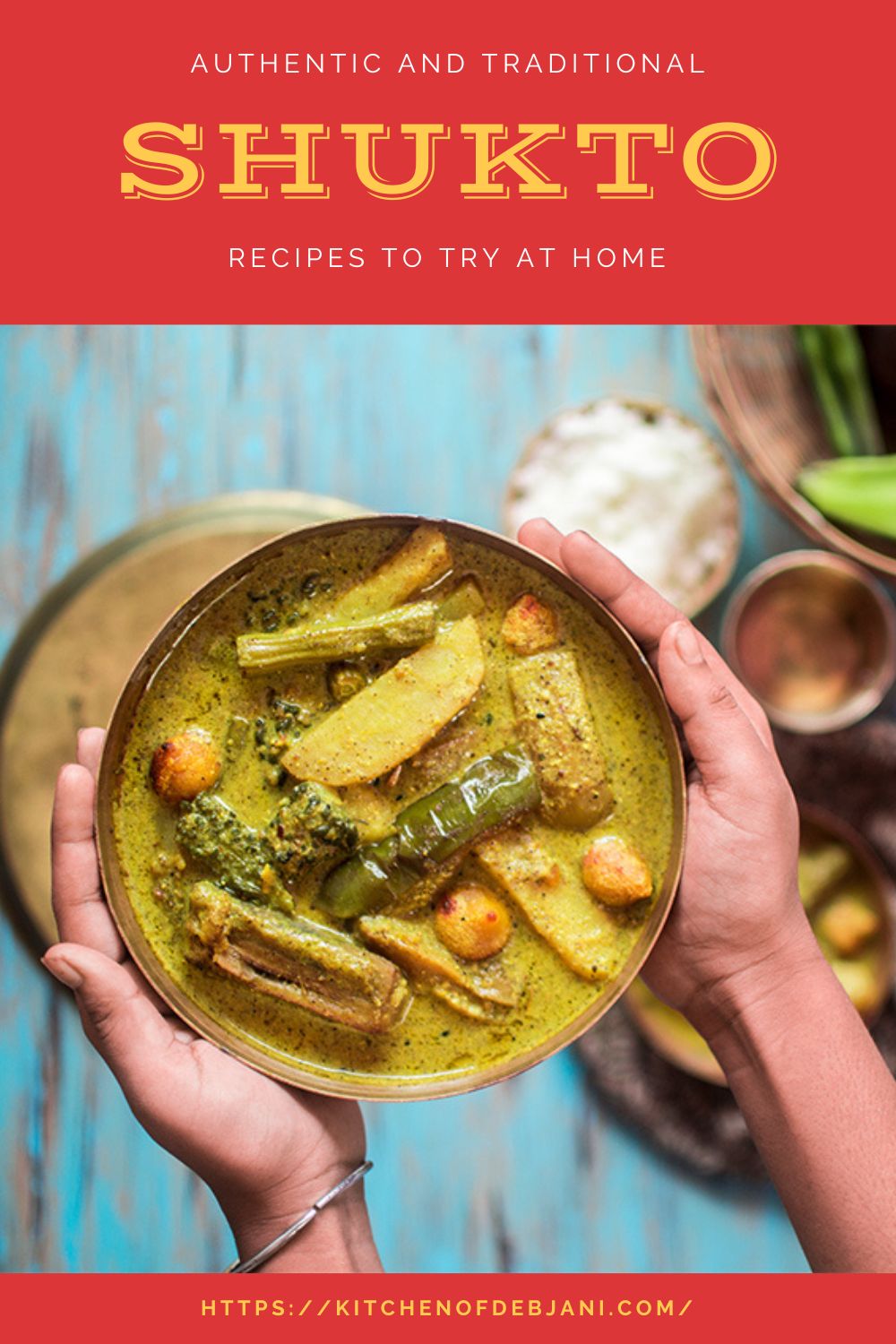


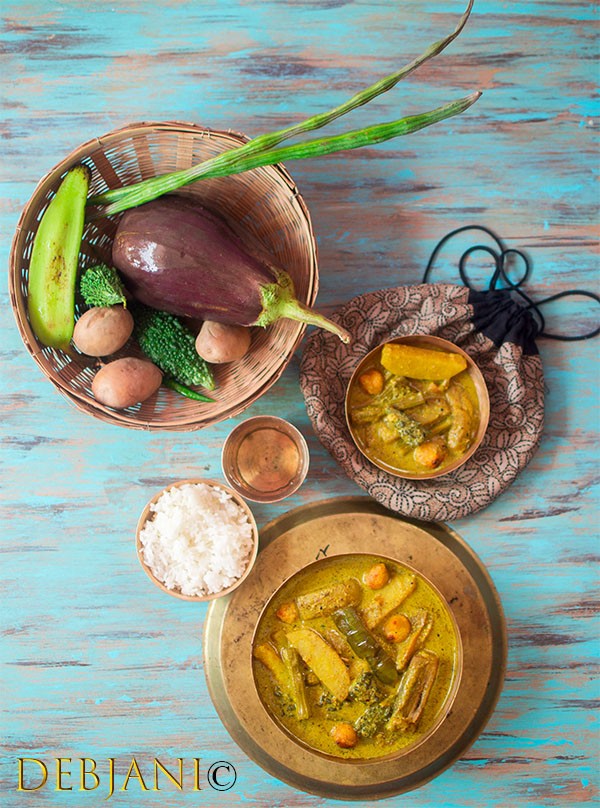

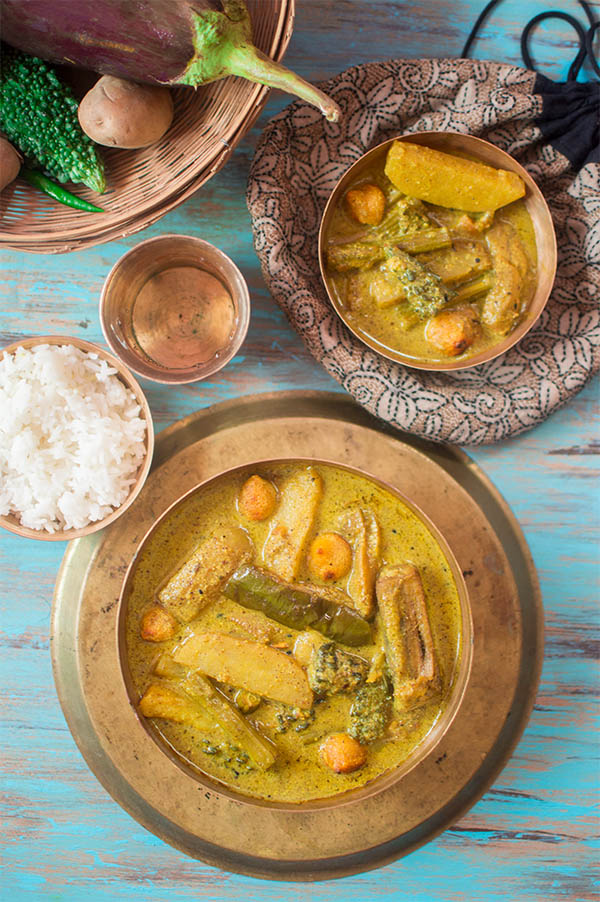
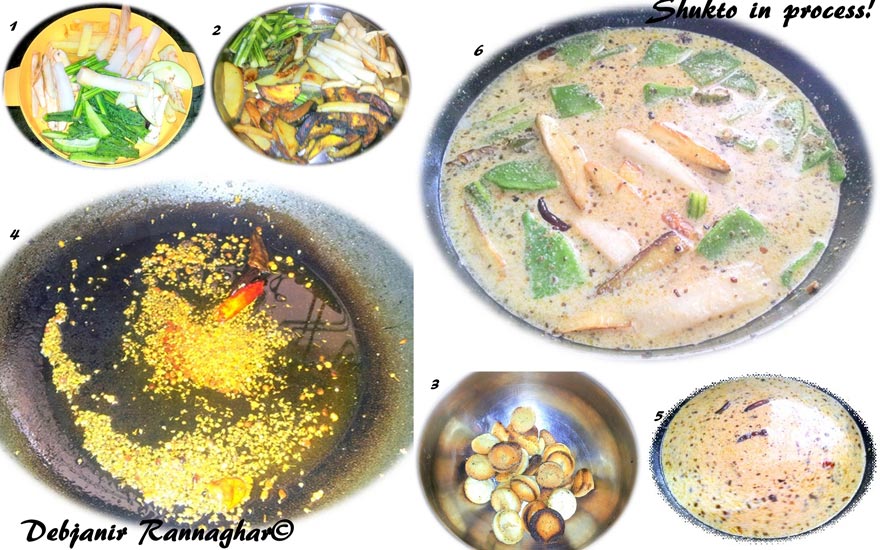
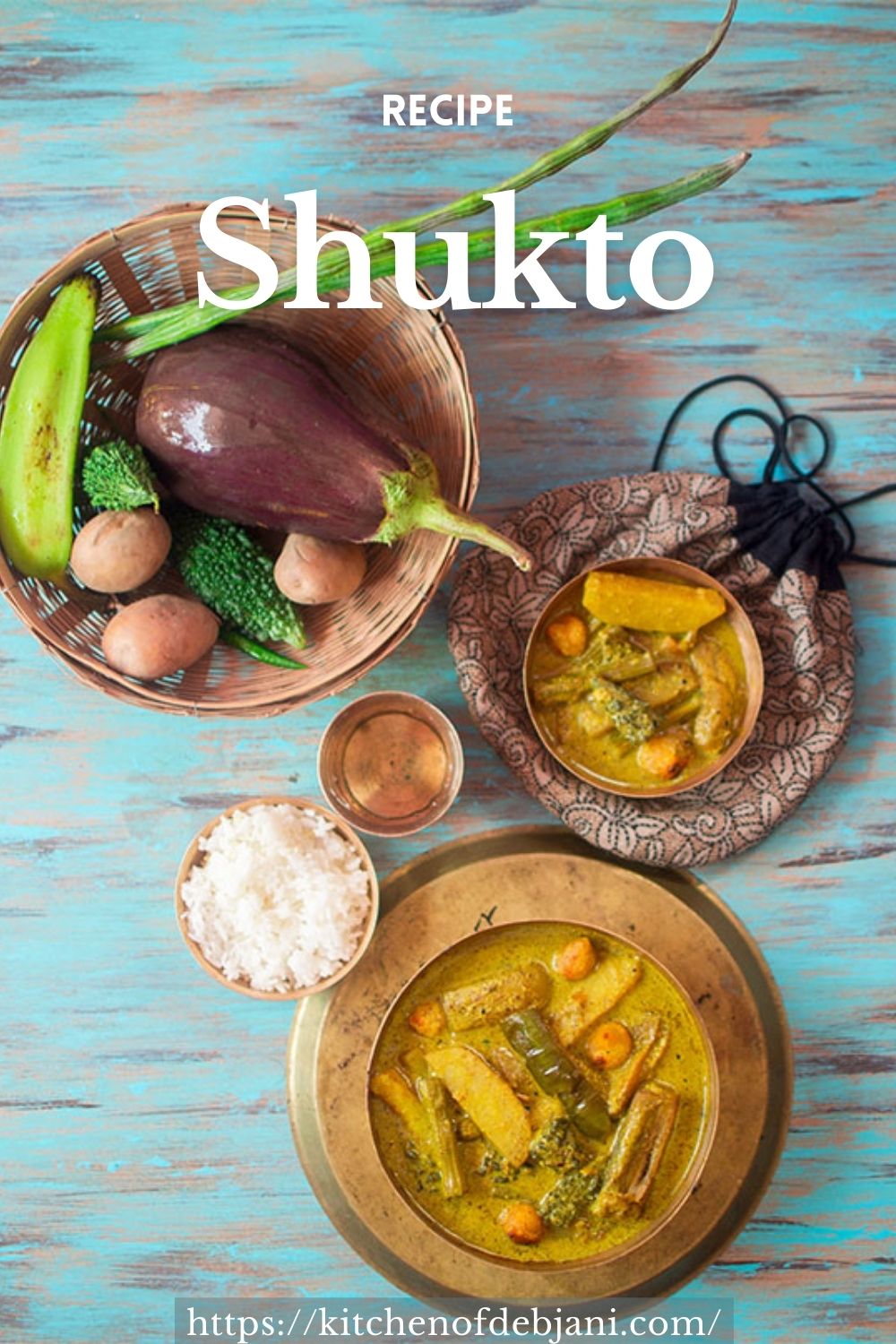



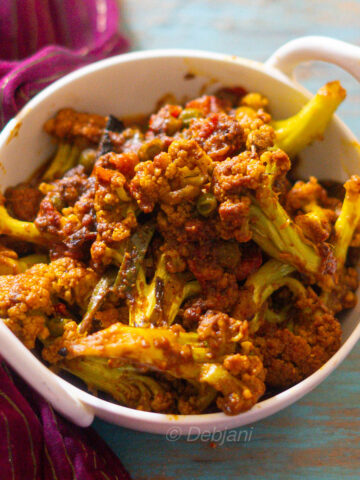
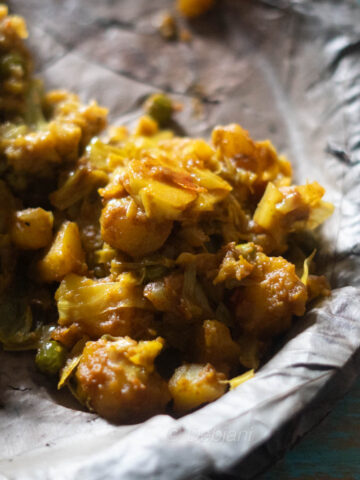
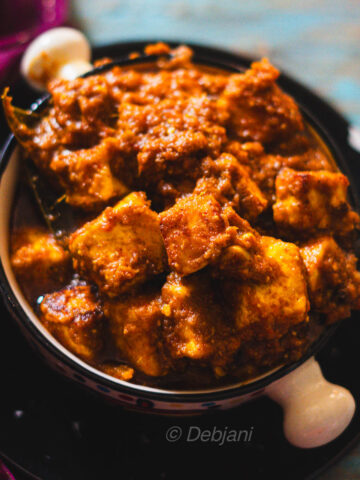

Kirti Mahamia says
Hi Debjani this is a great recipe! Can I add milk after the posto baat with the vegetables has cone to a boil?
Debjani says
Hi Kirti!
I prefer to add Milk almost at the end(after adding Posto bata and even water) to avoid curdling of milk.
Debatri says
Normally when I make anything with mustard paste, it becomes bitter if cooked for too long. So here you are cooking the dish after adding the mustard paste for almost 15 minutes. Won't it become bitter?
Debjani says
The bitterness is not for the cooking time but for the way the paste's prepared as much as I know. So there is trick that you can follow while making the paste of Mustard Seed. Add some salt while making the paste and if using traditional "Shilnora" try to use minimum strokes to make the paste but in case of grinder you will not have the option though. Add a cup of lukewarm water to the paste and after straining use the watery part instead of the fiber. Shukto itself is a bitter dish so this trick is actually for other dishes prepared with Mustard paste.
uma says
Hi,
Thanks for the wonderful recipe.
Is it possible to cook without Posto Bata as I can't have posto due to my illness. I guess the taste will change.
Debjani says
You can skip Postobata if you wish. Will make the gravy a bit less rich that is all 🙂